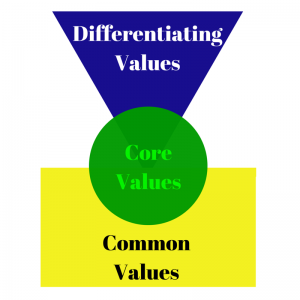The value of insight for marketers (Part-2)
This is the conclusion to Part-1 posted previously, on the value of insight.
 As a differentiating value, Insight means clear or deep perception of a situation; a feeling of understanding.
As a differentiating value, Insight means clear or deep perception of a situation; a feeling of understanding.
Marketers can obtain insight from many different methods, including focus groups and surveys. But the best way to obtain a clear and deep understanding of a situation is one-on-one individual interviews.
When asking customers and prospective customers the right questions, it doesn’t take long to see what they see, feel what they feel, and have a solid understanding about what they know. The results can be powerful.
Remember that feeling when you just “knew” the right thing to do? When you were so convinced that you were willing to bet your job on it?
Insight from customers and prospective customers can provide the type of confidence that you expect to hear from a respected scientist who is talking about a recent discovery. No one questions you. Instead, they listen with intent. It’s like you possess the keys to the gold in the locked vault.
However, the insights shared must be relevant to the needs of the organization. If you are winning on price and are trying to determine a new distribution strategy, then confirming you have great pricing isn’t helpful.
Useful insight comes from asking the right questions.
Asking better questions
All good questions should lead to useful insight on one of two fronts: directions to move forward; and directions to avoid. In addition to improving confidence between choices A or B, it’s also helpful to know what areas you should stay away from.
As a general rule, it’s best to avoid questions that lead to Yes/No answers. Rather, ask questions that open the door for exploring additional information.
For example, if you determine your customer prefers Brand-A to Brand-B, understanding the ‘why’ is the most fruitful part of insight gathering. You could ask any of the following questions:
- If I didn’t know anything about Brand-A, how would you briefly describe it to me?
- Where do you think the name ‘Brand-A’ came from? What do you think it means, if anything?
- How does Brand-A add value to you today, in a way that Brand-B can’t say or do the same?
- What are the key reasons you feel others buy Brand-A today? What are the key reasons you feel others don’t buy Brand-B?
- Who do you feel is the most typical buyer of Brand-A? Who would not buy it, and why?
The key to asking good questions is to approach the topic or issue from a familiar place (to the customer) or use a non-threatening analogy. For example:
- If Brand-A were an animal, what kind of animal would it be? Why?
- If Brand-B were an animal, what kind of animal would it be? Why?
Based on the answers, explore the differences. For example, if one is a German Shepherd dog and the other is a Giraffe, you now have a basis to explore why. Note that the type of animals selected is irrelevant. What matters is the difference between the choices. The real gold lies in the difference.
One thing to remember: never argue with customers. It’s ok to push a little when exploring for a deeper understanding. But whatever they say is correct – in their mind. Their perception is your reality.
For marketers, discovering opportunities for differentiation and competitive advantage often lie in the gaps between perception and reality. This is where the value of insight can play a critical role.
How have you used the power of insight to develop competitive advantage?








0 Comments
Trackbacks/Pingbacks